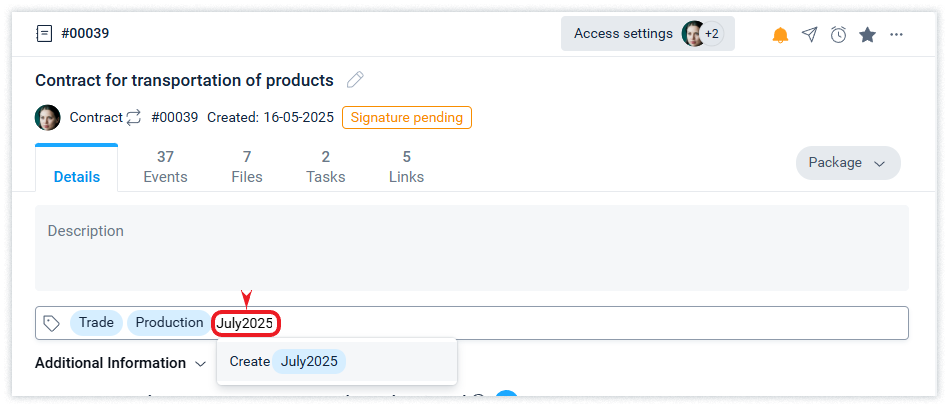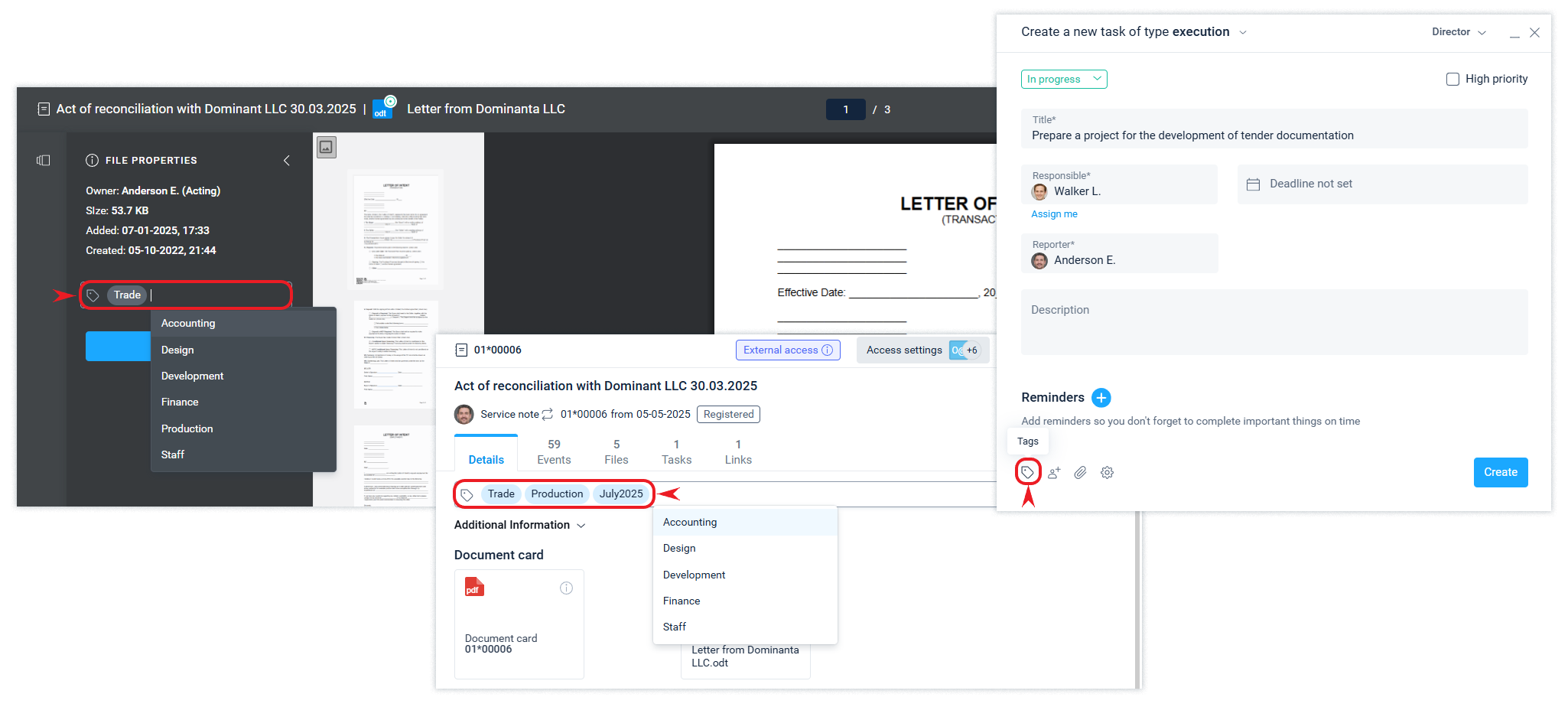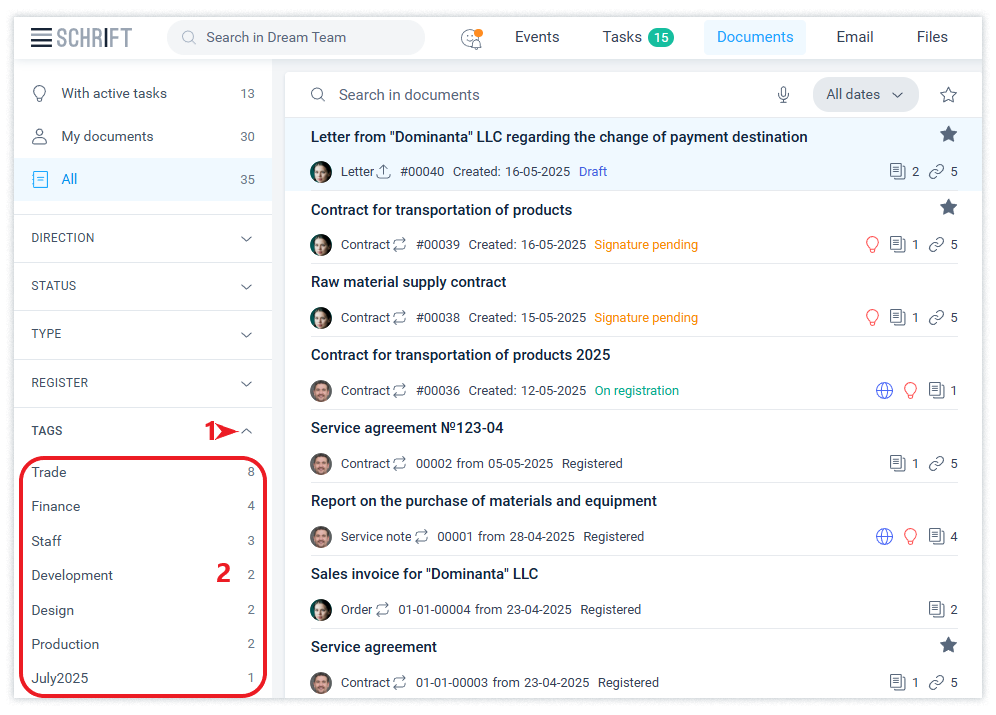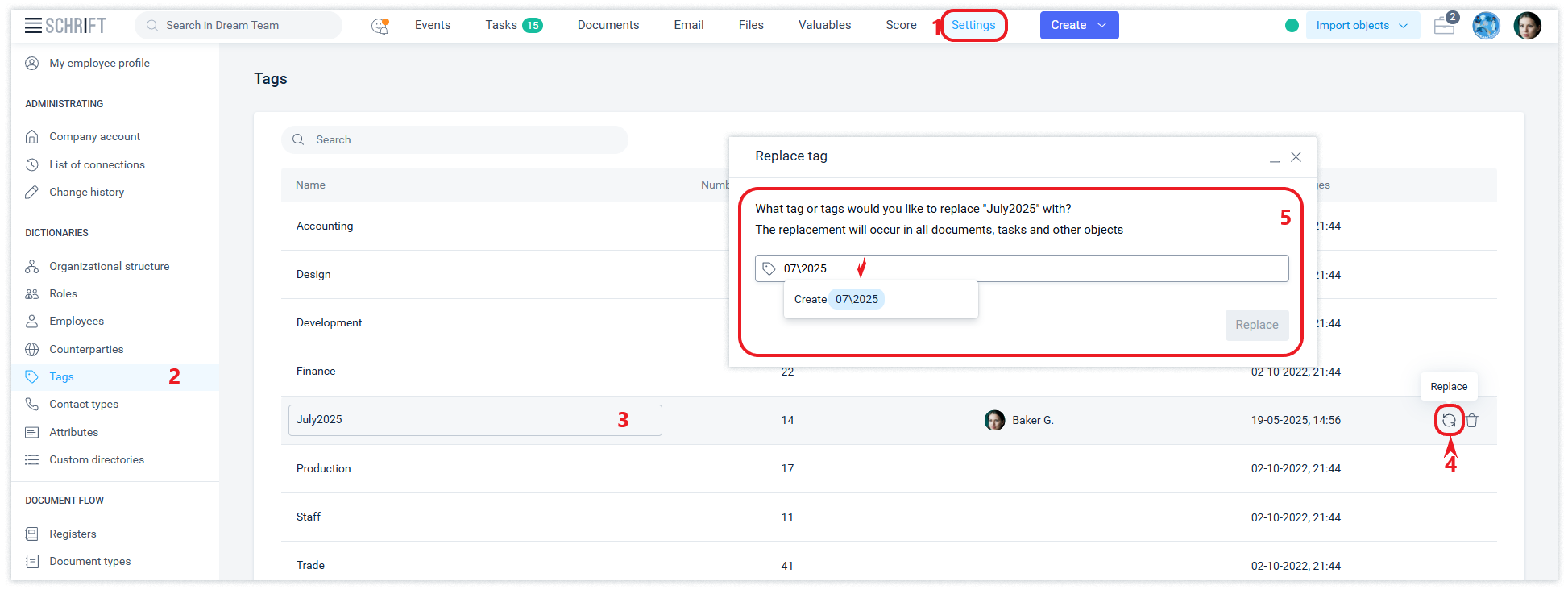Tags
The purpose of the tags is to provide users with a more convenient way to work with the available information without using folders similar to those familiar to everyone in Windows Explorer.
Folders always have a hierarchy and a document can always be in only one folder (you can create a shortcut, but a shortcut is not a document). This is the inconvenience of folders, because you cannot filter all documents for 2023 if the folder structure is like this: Type of contract / Name of counterparties / Year. And if you make the folder structure different: Year / Name of counterparties / Type of contracts, then it will not be possible to display all documents for one of the types of contracts. And so on : )
In the Schrift system, tags create a 3D structure, i.e. without the concept of nesting and with the ability to start selecting the contents of a folder (tag) by any of the tags present in the document. That is, the same document can be in many folders at the same time and without copying it (!). It is important that the document be given as many tags as there would be folder levels if the document was located, for example, in an Explorer folder.
Create new tags
You create tags by entering text in the tag field and pressing the Enter key. A new tag created by one employee is available for all other employees to use.

Adding and removing tags to a document
Adding and removing tags to an object is available to all users who have access to the object. You can add any number of tags to an object. A tag added to a document by one employee will be available to all other employees who have access to the document. Subsequently, this makes it easier and faster for all users to find the information they need, and each employee creates value for all employees. Therefore, users are encouraged to add tags to make the search process easier for themselves and their colleagues.
You can add any number of tags to an object.

We recommend adding tags that are simple in text - those consisting of 1-2 words, since adding tags consisting of several words deprives the tagging system of its main meaning: searching not in a flat, two-dimensional environment, but in a multidimensional environment in which selection can be started from any point (tag) in the system.
For example, a user added the following tag: “New word search system shipped”. In the future, he and other users will see this tag in the list for selection and addition, although it is long and not very convenient to work with. But the main inconvenience will be that other system objects that have the tags (in various combinations) “Shipment”, “New”, “System”, “Search”, and “Words” will not be found by this (long) tag, and an object with a “long” tag will not be found when searching for one of the “short” tags.
Filtering and searching by tags
To filter by tag, select the tag you are interested in from the list, so the system displays only the information that is assigned to the tags that participate in the filter. Further selection by tags allows you to narrow the search results - it selects those objects that have all the selected tags.

Object tags are used in full-text searches, so don't forget to add tags to make it easier to find the information you need when you search for information in the future. Changing or deleting tags on objects will result in changes in the search results, as the tags are included in the search index, i.e., they are taken into account when searching for information.
It's also important to note that you can filter by excluding results with the specified tag, i.e. exclude objects that have the selected tag.
In addition, you can mark tags as favorites, so they will always be raised to the top of the list when you select them and when you add them to objects.

Tag directory
The Tags directory is maintained by the administrator and users who have the appropriate roles to manage the tags directory. This includes changing and deleting tags, as well as replacing one tag with another or a group of other tags, which solves the problem of dividing a long (consisting of many words) tag into several simple ones.

